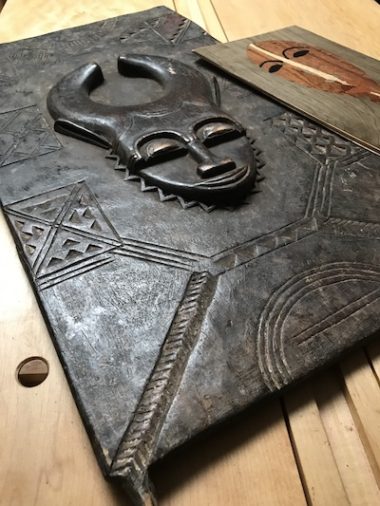What happens today creates tomorrow
I believe that the act of making a personal altar is meditation. That act can be most meaningful when the project is put together with purpose and thought.
Altars play an important role in religious and spiritual practices. How do they do that? They ground a deep healing practice by creating a focal point and a space to hold sacred items.
Healing rituals are vital to survival. Air, food, and water are the necessities that all of us need in life. Which is more important? I really could not tell you. I believe that creative activities play an important role in helping all of us get that healing. Whenever I need it, I step into my shop and do some work. There are times, however, when all I want to do is sit in a quiet space and be still.
Part 1
An altar for healing
Culture [is] something in which one should thrive; further, that healing means putting the heart, courage, and energy back into one’s self within one’s own culture.
– Alice Walker
Inspiration: Dogon doors
Dogon doors are used in Mali to cover granary storage openings. Used primarily outside, the doors protect against mold, insects, and animals.
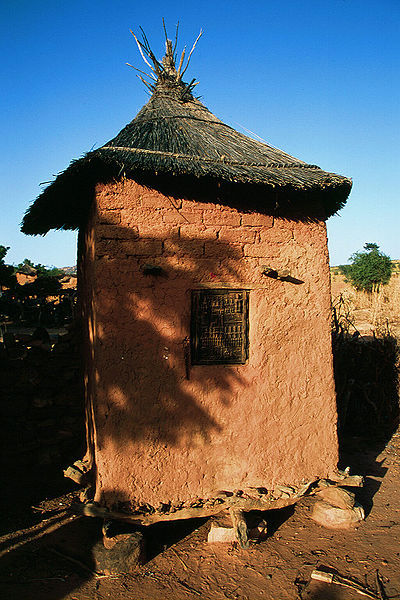
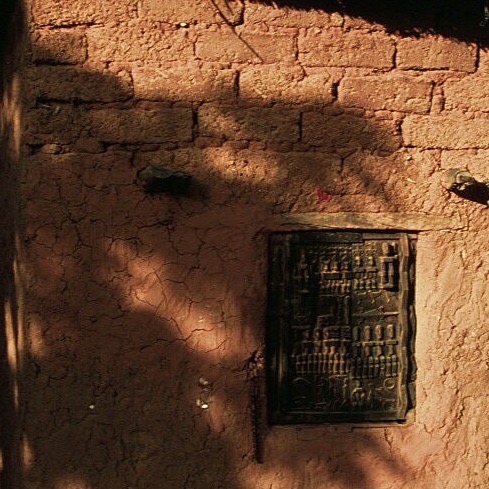
The carved figures of spirit animals or people are placed on the doors with intention and purpose. Doors are used inside a home or in the compound. The intention is to gain privacy and promote a bit of mystery. Another goal is to protect personal objects and ancestral treasures that are used to define a family.
The doors, usually commissioned, might indicate the occupation or status of the owner. Carving details, size, and location suggest wealth, reputation and standing in the village or community.
Inspiration: the doors of Baule
Baule doors are more likely used in the interior of wealthier households. They may be used as altar doors for spaces that outsiders were never allowed to enter.
Figures of animals – crocodiles, birds including water foul and antelope – were carved into the doors. Each figure symbolized and emphasized admirable animal and human qualities. Qualities such as greed and evil were used for warnings or as reminders of cautionary tales unveiled in fables.
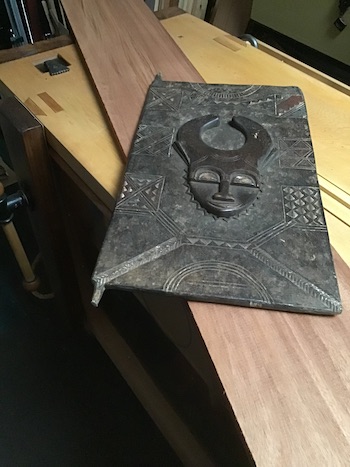
Inspiration: Absorption
Since the 15th century, the humanity and history of the entire African continent has been distorted, to put it mildly. Its people, resources, and sacred works were appropriated with impunity… without permission… without checking… without… well, you get it.
Many original heritage items on display anywhere in the world are viewed as art. That is an inaccuracy borne from the very harsh reality of post-colonial greed. I discussed the issue in earlier posts here and here. Oh, and here.
The Gouro – people of the masks and doors – are still here. Living primarily on the west coast of Africa – Cote d’Ivoire – they have adapted to modern life and maintained their culture. The Gouro, as well, have influenced diasporan culture via fashion, dance, music, and spirituality.
Inspiration: Anchoring
Storytelling, you know, has a real function. The process of the storytelling is itself a healing process, partly because you have someone there who is taking the time to tell you a story that has great meaning to them.
They’re taking the time to do this because your life could use some help, but they don’t want to come over and just give advice. They want to give it to you in a form that becomes inseparable from your whole self. That’s what stories do.
Stories differ from advice in that, once you get them, they become a fabric of your whole soul. That is why they heal you.**
_____
First step: prepping the altar
This project will adapt a Baule door as part of an altar cabinet design.
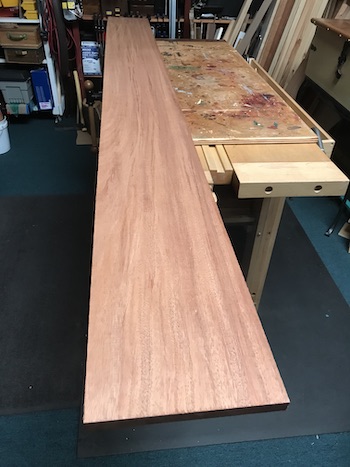
I found an eight foot plank at the local lumber yard. From the plank, I cut 2 boards: one 42″ for the top and bottom, and the other one 53″ for the two sides of the altar.
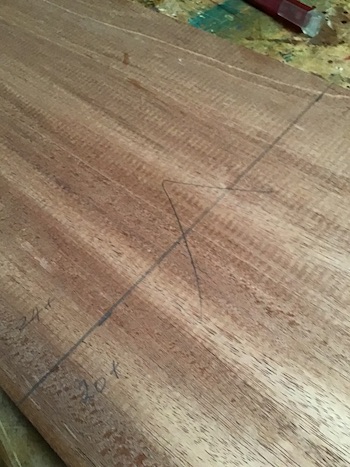
The board was marked off for the needed lengths. Then I scored it with the tri square and marking knife.
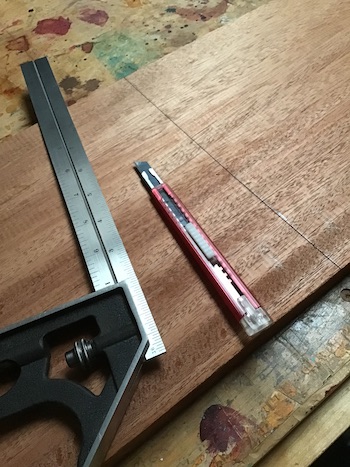
I used a handsaw to cut the plank into the two pieces.
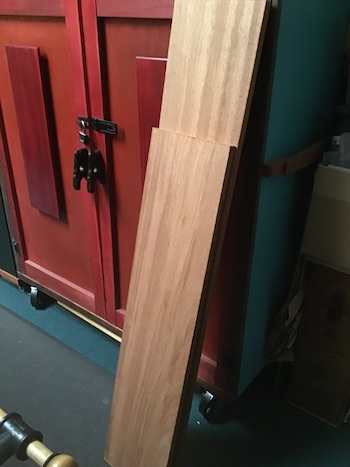
Starting with the shorter board for the altar cabinet top and bottom, I used a low angle jack plane with a cambered blade to prep each face and edge.
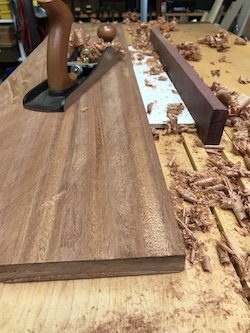
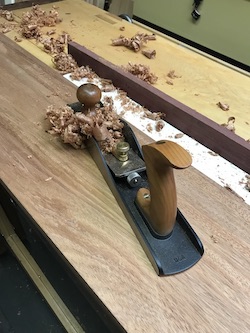
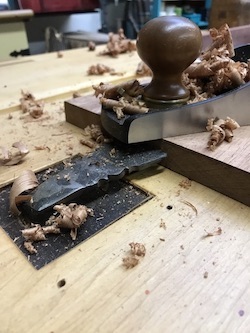
The work continued after evaluating the flatness of the primary face. Fortunately, the board was fairly flat and pretty straight. I let it acclimate in the shop for almost four months before I started this project.
Woodworkers’ lament
Do we really know what we are getting when we pick out lumber? The actual identity of a board is not always accurate even from the lumber yard. I have to rely on the integrity and certification by the people who work there. Well, wood is wood as long as it’s not on the CITES endangered list. After those considerations, I just want the lumber to be workable.
I imagined that the exceptional qualities of mahogany would be a great match for this altar. Obviously not Swietenia genus or “genuine mahogany”, this board is Khaya or African mahogany, a non-endangered substitute. It can be temperamental. I had to deal with a bit of tear-out while planing the face.
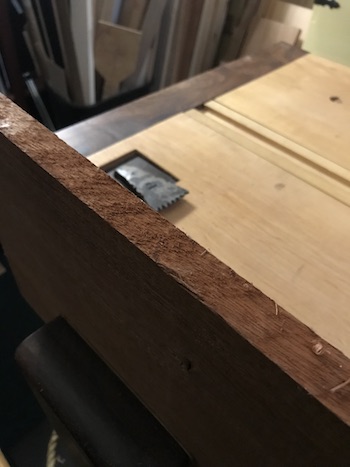
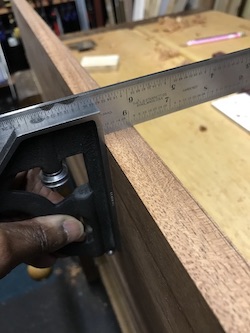
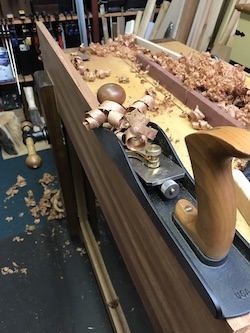
The desired result:
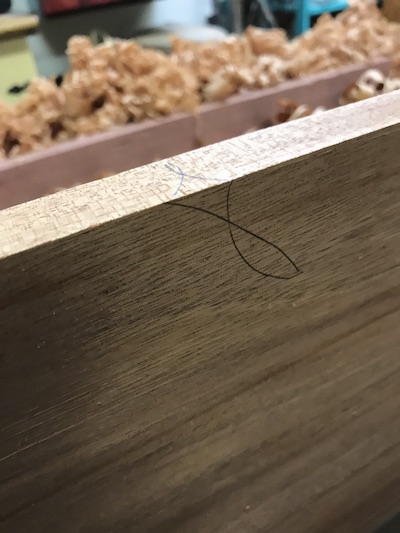
and ready to help in finishing the other face and edge.
Satisfied with the preparation of the rest of the board, I moved on to the other one. The prepping steps were repeated.
Once both boards were prepped, I was ready to cut each in two for the top, bottom, and two sides.
________
In the next post: I’ll continue with the rest of the story.
Baadaye.
♥️ Shirley J
______
** Alice Walker in an interview about her work in Common Boundary, 1990

